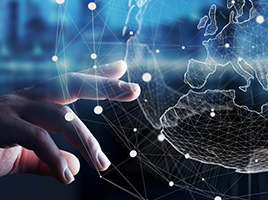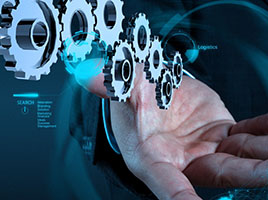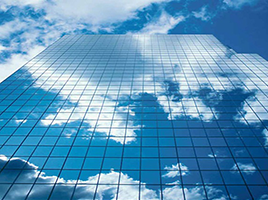Get 2019 ERP Pricing: 45 different ERP systems profiled including Epicor, Microsoft, SAP and more. Click to download your free guide.
ERP systems have come a long way since their introduction in the 1980s, yet their purpose remains the same: Combine information from all business functions into a common system to allow for improved access.
Whereas systems of the past were dependent on data entry, modern ERP technologies are able to collect massive amounts of data to proactively determine company needs. Today’s manufacturers are creating new ways of capturing, processing, and using ERP data to better serve their customers and improve profits.
Robotics Innovations
Enterprise process robots are making great strides within the industry. Where companies were once dependent on people to perform routine and redundant tasks, robots are now being used for data entry, monitoring, and notifications. Enterprise tasks were often plagued by human error but are now being performed by robots with a high degree of accuracy and efficiency.
In the past, an individual had to monitor inventory reports to identify changes in inventory levels and then notify procurement to buy more or less of a certain item. Today’s robots, on the other hand, can automatically check that information and send notifications to adjust inventory levels — 24/7.
Robots add value through the real-time monitoring of activities and distribution of that information throughout the ERP system, so all functions — sales, procurement, marketing, and finance — can be aware of and use that data within their processes.
IoT and ERP
Internet of Things (IoT) sensors provide an innovative way to collect and transfer data to an ERP system. Where robots are located on-site within a business, IoT smart sensors can be located outside of the business, transmitting data to the ERP system.
Various types of sensors can be used to measure acceleration, pressure, water, proximity, gas, temperature, smoke, motion, and other factors that can be gauged remotely. Supply chain operational efficiencies are often targeted toward vendor relations, forecasting and inventory, asset tracking, and connected fleet management.
The primary benefit of IoT sensors is that they feed ERP systems with current and real-time data to achieve greater efficiencies and create predictive analytics. Proactively meeting customer demands for service or inventory is key to remaining competitive and achieving industry-leading service levels.
Cloud Computing Comes of Age
ERP technologies have seen major advancements in the transfer to cloud computing, releasing organizations of the responsibility of updating and maintaining the equipment necessary to run on-site programs. These ERP software as a service (SaaS)-based programs, therefore, allow for more uptime.
However, Gartner Research reported that less than 20% of companies opt for on-site supply chain ERP systems, instead favoring the cloud computing model. The total supply chain management (SCM) software market is estimated to reach $19 billion by 2021, with SaaS models estimated to make up 35% of the market.
The primary reasons for moving to the cloud computing model? Gartner lists three reasons. First, many vendors are moving to cloud-based models, encouraging business partners to do the same. Companies are also moving up the learning curve by getting comfortable with cloud security and the innovations SaaS services have to offer.
It’s no secret that logistics companies are taking advantage of all of these innovations, with Amazon at the forefront. The online retail giant has revolutionized the field of logistics by incorporating robots, the IoT, and cloud-based operations, establishing the company as not only a dominant e-commerce leader, but also an innovative logistics company.
Enhanced Visibility, Better Customer Service
Having visibility into the entire supply chain ultimately serves customer demand for immediate ordering, fulfillment, and delivery. Companies implementing these new ERP technologies are winning the race and capturing market share. As you begin to analyze the past year’s wins and losses and prepare for a new year, consider the ways a sophisticated ERP system can help your business.








